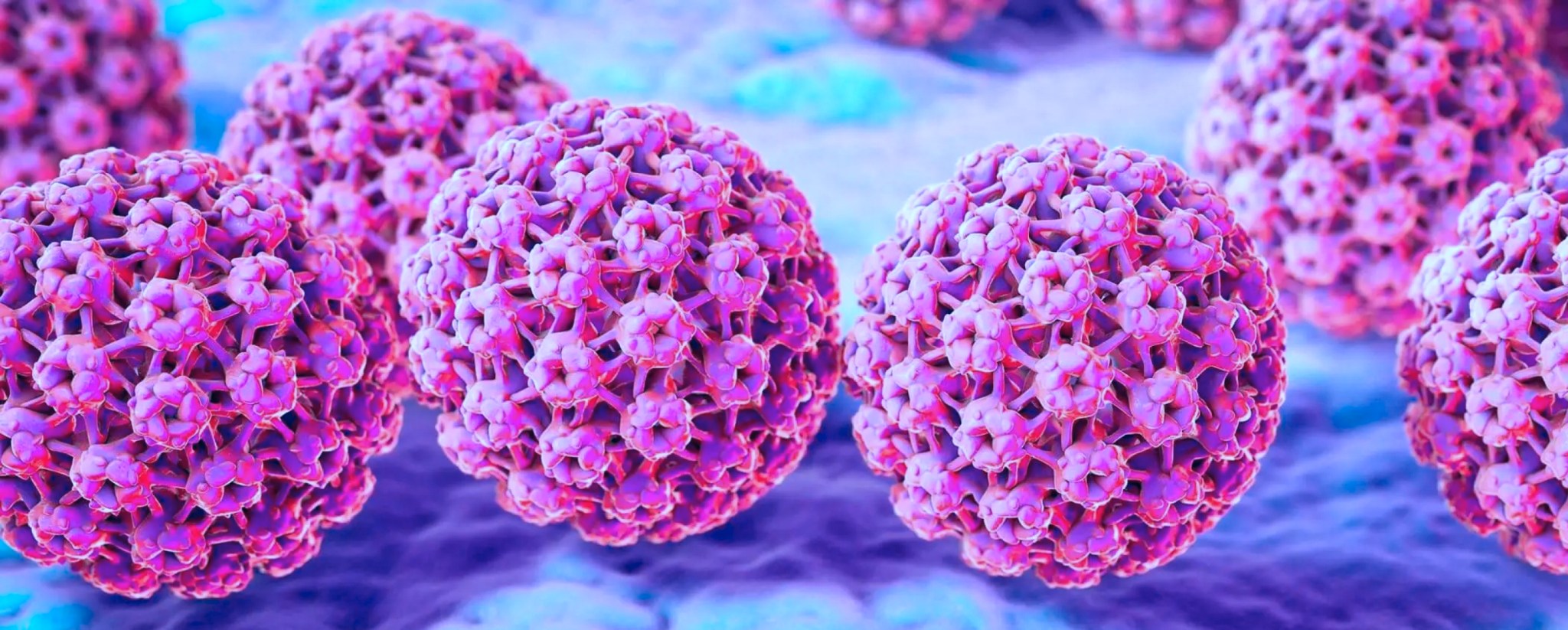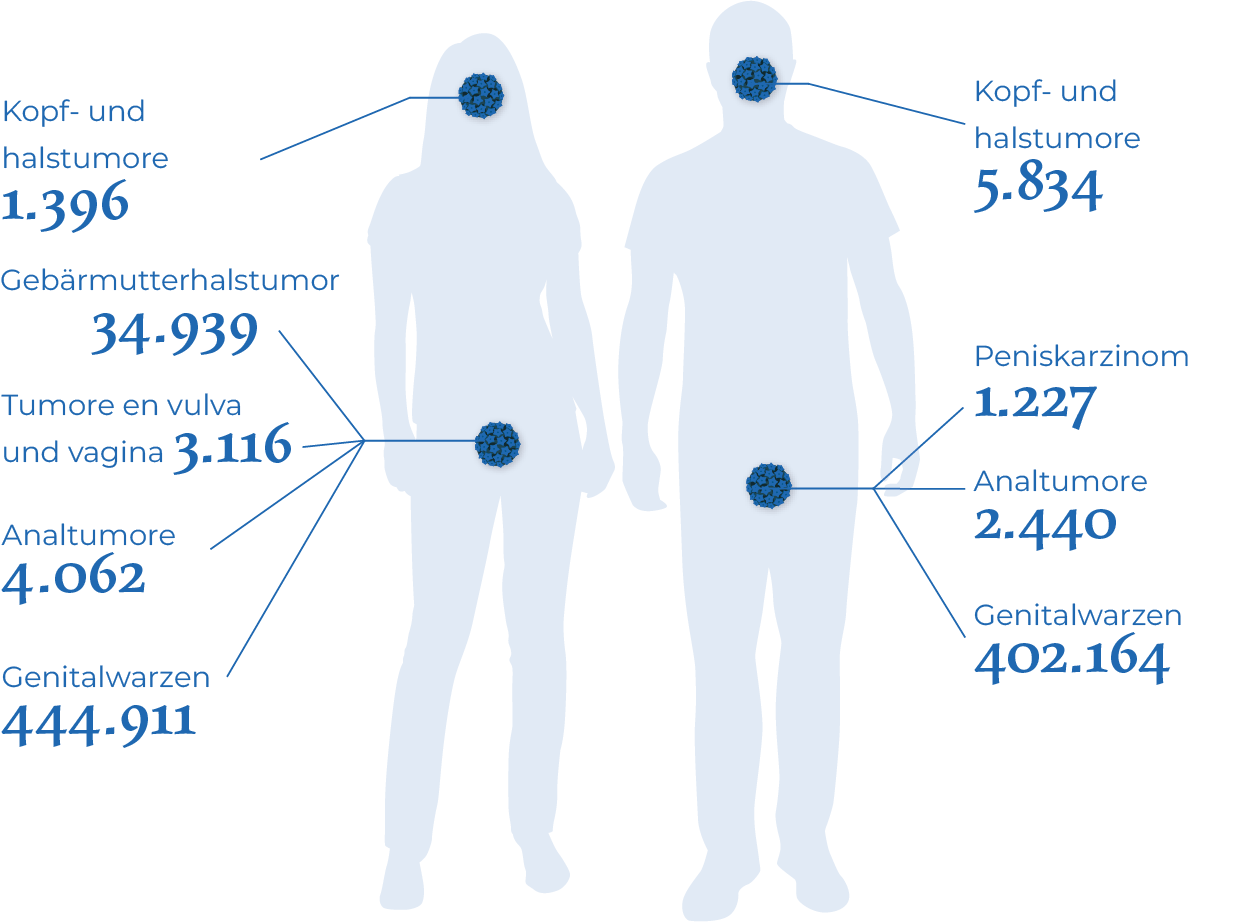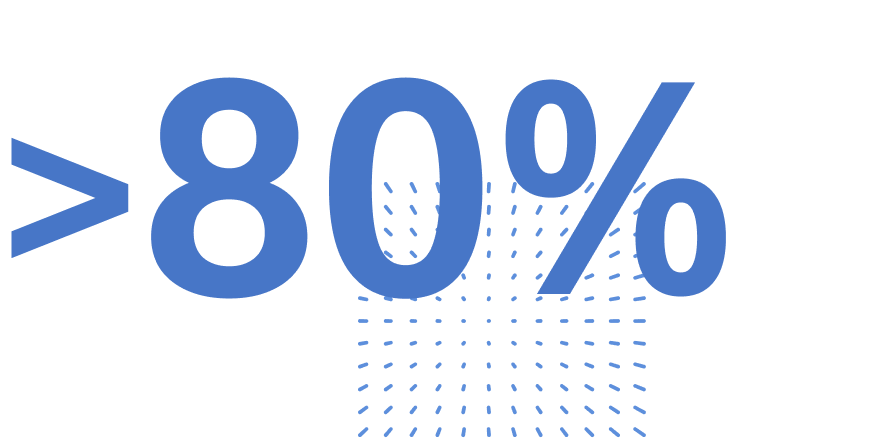
Alles über das HPV-Virus
Schützen Sie sich und Ihre Lieben. Informieren Sie in Ihrem Umfeld über die HPV-Prävention und
die Vorteile von Vorsorgeuntersuchungen, um Ihre Umgebung zu sensibilisieren und eine sicherere Welt zu schaffen. Sprechen Sie mit Ihrem Arzt oder Apotheker über weitere Informationen zu HPV und Ihrer persönlichen Situation.
HPV betrifft Männer und Frauen gleichermaßen

Geschätzte durchschnittliche Anzahl neuer Fälle von Krebs und Genitalwarzen im Zusammenhang mit HPV pro Jahr in Europe.5
Die humanen Papillomviren (HPV) bilden eine Gruppe von Viren, die an Haut und Schleimhäuten zu Infektionen führen.
Insgesamt gibt es mehr als 200 HPV-Typen, die sowohl bei Männern als auch bei Frauen die inneren und äußeren Geschlechtsorgane, den Analbereich, bestimmte Hautregionen und auch die Mundpartie befallen können.6Ungefähr 12 dieser HPV-Typen zählen zu den sogenannten Hochrisiko-Typen, da sie die Entstehung von Krebsvorstufen und Krebs verursachen können. Dabei handelt es sich meist um Gebärmutterhalskrebs, jedoch treten auch andere Krebsarten bei Männern und Frauen auf.3In nahezu 90 % heilt eine HPV-Infektion unbemerkt wieder aus, aber bestimmte Typen der HP-Viren können sowohl bei Männern als auch bei Frauen zu sehr schwerwiegenden und lästigen Krankheiten führen.3

Die Übertragung von humanen Papillomaviren (HPV) kommt weltweit vor. Über 80 % 1 der sexuell aktiven Bevölkerung wird irgendwann mit einer HPV-Infektion konfrontiert, die Hälfte davon im Alter von 15 bis 24 Jahren, die andere Hälfte im Alter von 24 bis 59 Jahren.7
Es handelt sich um eine unsichtbare Infektion, die in den meisten Fällen unbemerkt bleibt, und es gibt keine einfache Möglichkeit, um festzustellen, ob jemand mit HPV infiziert ist. Bei 90 % der Infizierten ist das Virus dank ihrer natürlichen Immunität nach 2 bis 3 Jahren nicht mehr nachweisbar.3

Manchmal bleibt das Virus im Körper, ohne irgendwelche Anzeichen oder Symptome zu zeigen,
und kann daher unbemerkt übertragen werden.
DNA = Desoxyribonukleinsäure, ein biologisches Makromolekül, das die gesamte genetische Information enthält
HPV = Humanes Papillomavirus
STI = sexuell übertragbare Infektionen
- Chesson HW et al. The estimated lifetime probability of acquiring human papillomavirus in the US. Sex Transm Dis 2014;11:660-664.
- Shi R et al. BMC Res Notes. 2014;7:544;Factors associated with genital human papillomavirus infection among adult females in the United States, NHANES 2007-2010.
- Conseil Supérieur de la Santé. Vaccination contre les infections causées par le papillomavirus humain. Bruxelles : CSS; 2017. Avis n° 9181.
- https://www.sciensano.be/sites/default/files/hpv_primaire_communication_fr_20241101_sciensano_1.pdf. Last access: 02/2025.
- Hartwig S. et al. Estimation of the overall burden of cancers, precancerous lesions, and genital warts attributable to 9-valent HPV vaccine types in women and men in Europe. Infect Agent Cancer. 2017;12:19 (Annex 1&2).
- Hartwig S. et al. Estimation of the epidemiological burden of HPV-related anogenital cancers, precancerous lesions, and genital warts in women and men in Europe: potential additional benefit of a nine-valent second gene-ration HPV vaccine compared to first generation HPV vaccines. Papillomavirus Res. 2015;1:90–100 (Annex 3).
- IARC report: https://hpvcentre.net/statistics/reports/BEL.pdf?t=1701719033972. Last access: 02/2025.
- ECDC 2020. Guidance on HPV vaccination in EU countries: focus on boys, people living with HIV and 9-valent HPV vaccine introduction (europa.eu). Last access: 02/2025.
- Satterwhite CL et al. Sexually transmitted infections among US women and men: pre-valence and incidence estimates, 2008. Sex Transm Dis 2013;40:187–93.
- Woodman C. et al. The natural history of cervical HPV infection: unresolved issues. Nat Rev Cancer. 2007;7:11–22.
- https://www.vaccination-info.be/la-vaccination-contre-le-papillomavirus-humain-hpv-une-vaccination-pour-tous/. Last access: 02/2025.
- Hartwig S. et al. Estimation of the epidemiological burden of HPV-related anogenital cancers, precancerous lesions, and genital warts in women and men in Europe: potential additional benefit of a nine-valent second generation HPV vaccine compared to first generation HPV vaccines. Papillomavirus Res. 2015;1:90–100.
- INAMI: Variations de pratiques médicales. Rapport Col de l’utérus, conisations. https://www.belgiqueenbonnesante.be/images/INAMI/Rapports/RAPPORT-FR-Col_de_luterus_conisation_Femmes_2023.pdf. Last acccess: 02/2025.
- Tjalma W. AA. et al. If prophylactic HPV vaccination is considered in a woman with CIN2+, what is the value and should it be given before or after the surgical treatment? Eur Journ Obst & Gyn & Reproduct Biology. 2022;98–101.
- Weaver BA. Epidemiology and Natural History of Genital Human Papillomavirus Infection. J Am Osteopath Assoc. 2006;106:S2–8.
- Bruni, Laia et al. “Global and regional estimates of genital human papillomavirus prevalence among men: a systematic review and meta-analysis.” The Lancet. Global health vol. 11,9 (2023): e1345-e1362.
- ICO/IARC Information Centre on HPV and Cancer. Luxembourg Human Papillomavirus and Related Cancers, Fact Sheet 2023 (2023-03-10)

Diese Website hat den Zweck, Sie über humane Papillomviren zu informieren. Für weitere Informationen sprechen Sie mit Ihrem Arzt oder Apotheker.
Allgemeine Geschäftsbedingungen
Datenschutzerklärung
Kontaktieren Sie uns
Arzneimittelüberwachung
Barrierefreiheit

© MSD Luxembourg S.à.r.l.
Rue de l’Industrie 11
L-8399 Windhof
© Copyright 2025, all rights reserved
LU-NON-00065
Date of last revision: 04/2025


